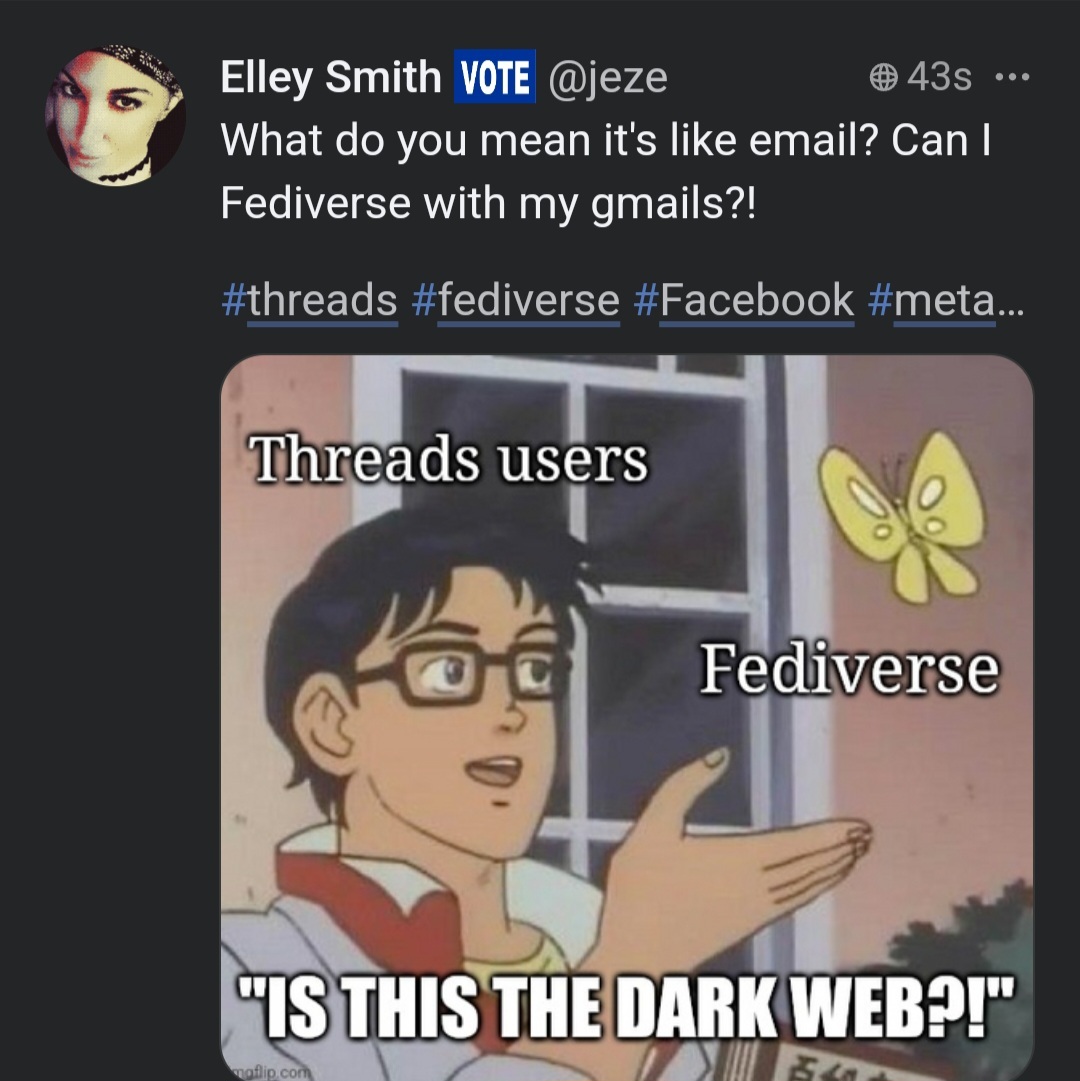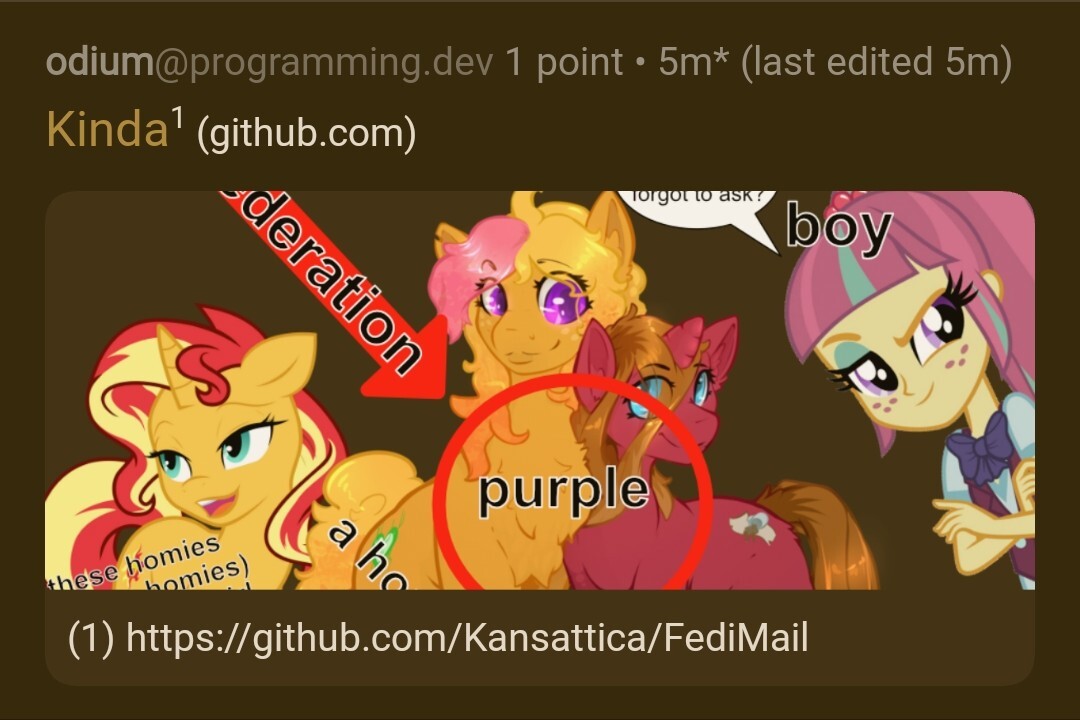Unfortunately email is likely the only federated network most people will know and be routinely exposed to. As such, it is the best way to describe what a federated network is. I describe the Fediverse something like such:
"Think about emails. There are loads of different providers (Gmail, outlook, Yahoo, etc.), each with their own web pages, their own email servers, etc.. But when you email someone else it doesn't matter what email provider they use, as long as you have their address, you can email them (assuming they haven't blocked you).
That's because emails are federated - every email provider sends emails the same way, using the same underlying language (or "protocol").
It's like how different parts of England or the US have way different accents, but because they're all speaking English, you'll generally understand what's being said.
Now imagine instead email providers, you had loads of little twitters doing the same thing. You could make a post and it gets sent out to all your followers, etc. no matter what little Twitter they're following you on. That's what Mastodon is - it's loads of little twitters in a trenchcoat.
Now imagine you did that for Facebook Groups [or Reddit if they're savvy enough]. Loads of little Facebooks where you could make groups and post, and people could join and view these posts regardless of what little Facebook they're on. That's what Lemmy is [or Kbin for the cool kids].
Everything on the Fediverse works like that. You have loads of little providers (instances), which all talk using the same underlying protocols (based on a protocol called ActivityPub), and act as one big interconnected web of social media."
It's a bit long winded, but it's simple and doesn't overwhelm with jargon. If they know what emails are, you can explain this to them..
I struggle to see another pathway in, because as I said before, most people aren't exposed to literally any other form of federation. Emails are to federation what Pandas are to Wildlife conservation.

